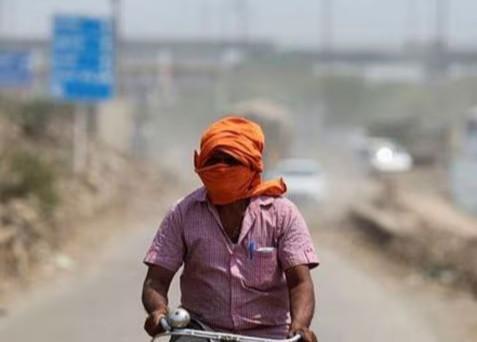
Extreme Heat Endangering Health & Productivity of Workers: Report
As the world grapples with the growing threat of climate change, a recent report by the World Health Organisation (WHO) and World Meteorological Organisation (WMO) has highlighted the alarming impact of extreme heat on the health and productivity of workers worldwide. The report, which has been gaining attention globally, emphasizes that the effects of heat stress are far-reaching, affecting not only workers in high-risk sectors but also vulnerable populations in developing countries.
According to the report, worker productivity drops by 2-3% for every degree above 20°C. This may not seem like a significant decline, but it can have a profound impact on the overall efficiency and profitability of organizations. Moreover, manual workers in agriculture, construction, and other sectors are particularly susceptible to heat stress, as they often work in outdoor conditions with limited access to cooling measures.
The report also emphasizes that vulnerable populations, such as children and the elderly, are disproportionately affected by heat stress. In developing countries, where basic amenities like air conditioning and access to healthcare are limited, the consequences of heat stress can be devastating. Heat-related illnesses, such as heatstroke and dehydration, can have long-term health implications, including kidney dysfunction and even death.
Heat stress affects not just workers but also their families and communities. When workers are unable to perform their duties due to heat-related illnesses, it can have a ripple effect on the entire ecosystem. This is particularly concerning in industries that rely heavily on manual labor, such as agriculture, construction, and manufacturing.
The report highlights several sectors that are particularly vulnerable to heat stress, including:
- Agriculture: Farmers and agricultural workers are often exposed to extreme temperatures for extended periods, making them more susceptible to heat-related illnesses.
- Construction: Construction workers, particularly those involved in outdoor projects, are at high risk of heat stress due to the physical demands of their work.
- Manufacturing: Workers in manufacturing industries, such as textiles and food processing, may be exposed to high temperatures and humidity, increasing their risk of heat-related illnesses.
To mitigate the effects of heat stress, the report recommends several measures, including:
- Implementing heat stress prevention programs: Employers can implement heat stress prevention programs that include regular breaks, hydration, and cooling measures to reduce the risk of heat-related illnesses.
- Providing personal protective equipment: Providing personal protective equipment, such as hats, gloves, and sunscreen, can help reduce the risk of heat stress.
- Conducting regular health checks: Conducting regular health checks can help identify early signs of heat-related illnesses, allowing for prompt treatment and prevention of more severe consequences.
- Implementing cooling measures: Employers can implement cooling measures, such as providing fans or air conditioning, to reduce the temperature in work areas.
The report also emphasizes the importance of education and awareness. Workers, especially those in high-risk sectors, need to be educated on the risks of heat stress and the measures they can take to prevent it. Employers must also take steps to raise awareness among workers about the importance of heat stress prevention.
In conclusion, the report by WHO and WMO highlights the urgent need for action to address the impact of extreme heat on worker health and productivity. Employers, policymakers, and individuals must work together to implement measures that reduce the risk of heat stress and promote a healthy and productive workforce.
Source: https://repository.inshorts.com/articles/en/PTI/45d9bd2d-ff57-417c-9e5f-831344bb34b0






